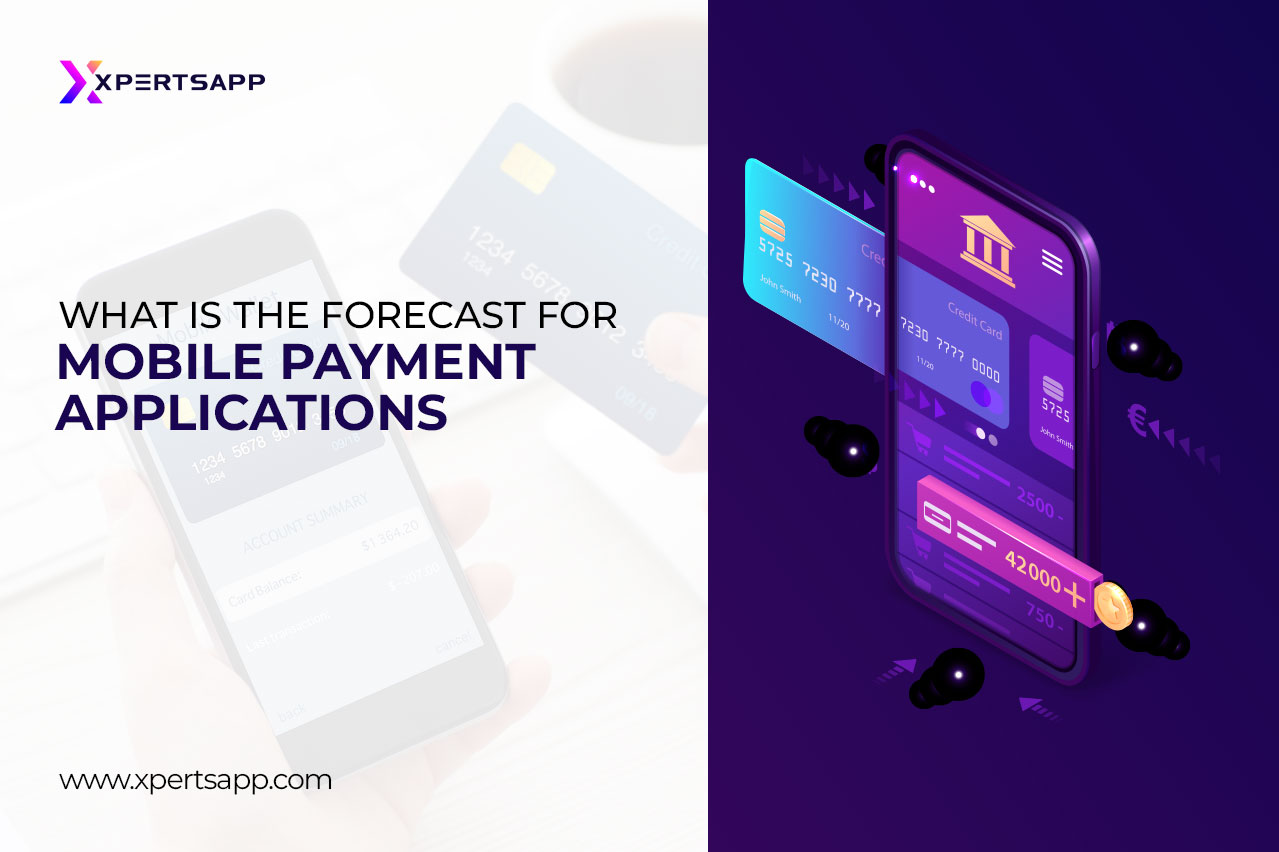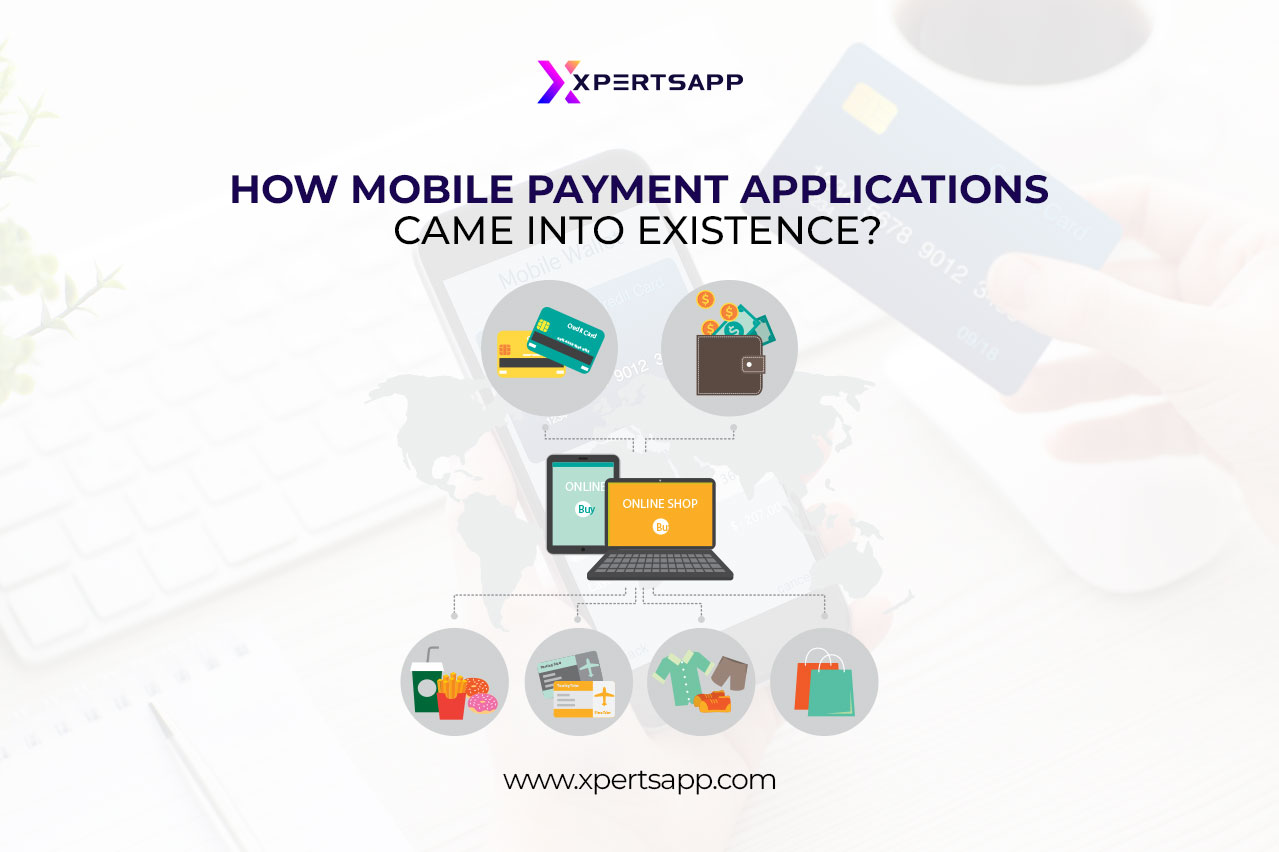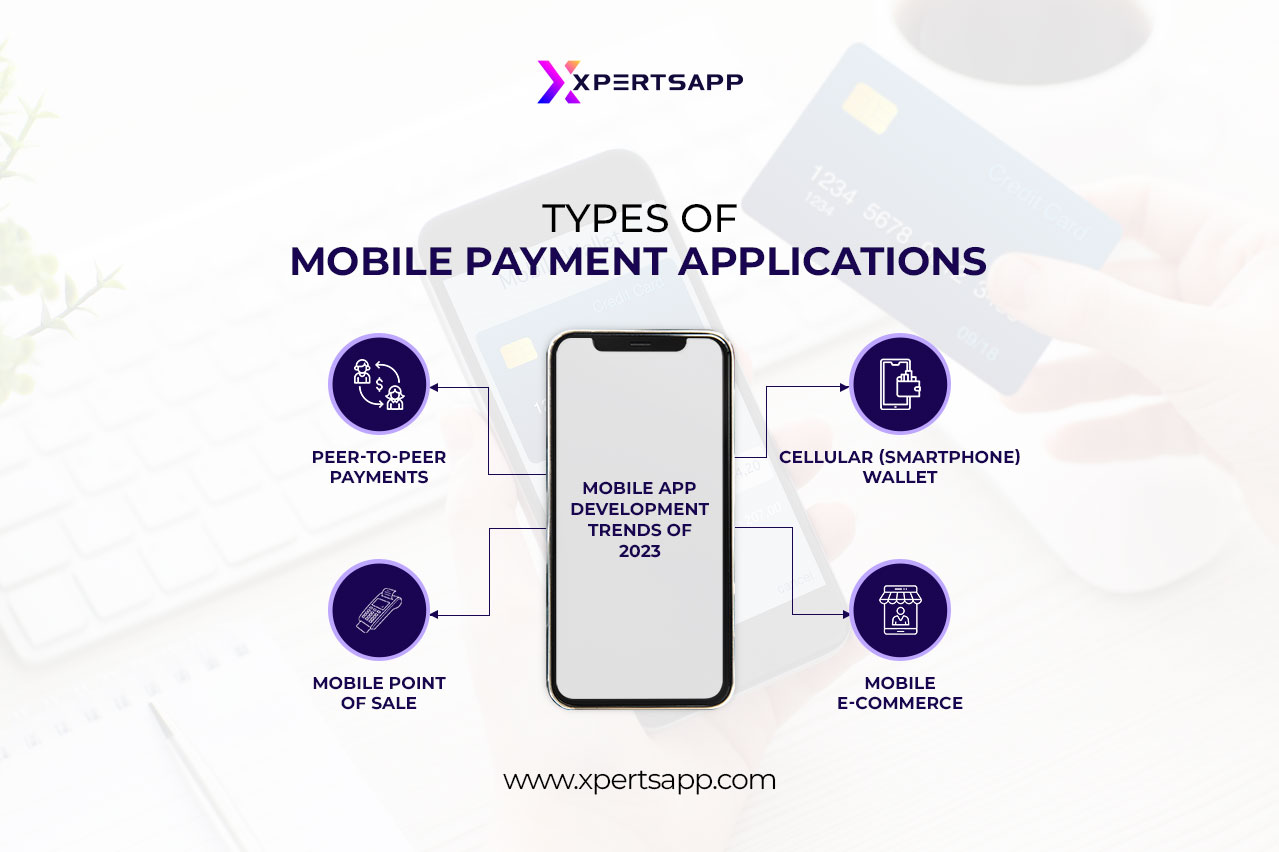What is The Forecast for Mobile Payment Applications in 2023?
by: XpertsApp Team
-6664 views

A mobile device, such as a smartphone, smartwatch, or tablet, is required for mobile payment, a contactless payment method. Small company owners naturally try to meet clients where they are, whether it means having the appropriate inventory on hand or providing easy ways to pay. Processing mobile payments are relatively easy for a business, although it takes some initial work. This involves spending money on moment-in-time devices (smartphones, tablets, smartwatches) that can process digital wallets and contactless payments. These smart devices might run mobile wallet apps or peer-to-peer payment apps, creating convenience for the audience worldwide.
How Mobile Payment Applications Came Into existence?

Carrying cash along had risks of theft involved for individuals. Payment systems will change similarly as more purchasing moves to mobile platforms. Customers, who are constantly looking for convenience and flexibility, are accepting mobile payments, even more, especially considering the level of security they offer. Several permissible reasons made corporations realize the importance of mobile payment applications, including:
- Realizing the barrier of carrying a bundle of cash, using mobile payments removes a hurdle for customers to complete their purchases. Customers can easily make purchases by tapping a phone or a credit card at a point of sale or using their payment apps to trade online.
- Financial institutions (for example, Banks) process mobile payments in a flash. Due to this, mobile checkout is just as quick as using a credit card.
- Increased consumer spending over online shopping discovered that consumers and businesses demanded online payment methods to comfort both ends. Utilizing mobile payments, more customers are making larger purchases. Consumers worldwide spent $1.786 billion through mobile payments in 2021. According to financial analysts, within the following five years, this number will have more than tripled.
- Reviewing the need for securing cash or financial data of individuals, it was essential to introduce a convenient payment method. One of the most secure and favorable payment methods is using a mobile device. This is because they are carried out on mobile devices, frequently demanding identification as a passcode, fingerprint, or facial recognition. Additionally, the gadgets encrypt their transmissions, significantly reducing the possibility of data theft.
Types of Mobile Payment Applications

Eventually, The newest generations have selected digital mobile payments as their preferred method of financial management. There are five primary types of mobile payments. Even though each is different, they all manage to transfer money from one account to another almost instantly.
Peer-to-peer Payments
People can send money to others via a mobile app or a website using this type of transaction, supported by platforms including CashApp, Venmo, PayPal, and Zelle. Most notably, PayPal is one of these systems that small company retailers widely use. This implies that PayPal can make payments to business owners instead of credit cards.
Cellular (Smartphone) Wallet
Mobile wallet services include applications like Google Pay, Apple Pay, and Samsung Pay. These services connect to a user’s credit card, debit card, or bank account and run on PCs, smartphones, tablets, and smartwatches. After setting up a mobile wallet account, users can use these gadgets similarly to how they would use a credit card. They can tap their smart device on a payment terminal with an NFC radio at a physical store. By choosing a mobile wallet icon (like Apple Pay) from the list of checkout choices, customers can use their mobile wallet account on numerous online checkout pages of multiple retailers.
Mobile Point-of-Sales
A retailer utilizes their mobile device as a payment terminal in a mobile point-of-sale (mPOS) setup. Customers can tap their card or mobile device into the reader for an NFC transaction or enter a credit card into the chip reader. At this moment, your point-of-sale system takes control and transfers funds to your account, and sends payment information to banking institutions. Popular mPOS service is provided by Square. Vendors can conduct contactless and chip card transactions using the Square wireless reader that the company offers.
Mobile E-Commerce
Any form of transaction that one does on a mobile device falls under this category, sometimes referred to as m-commerce. A purchase made through a mobile device’s browser or a merchant’s exclusive app counts as a mobile eCommerce transaction.
How Mobile Payment Applications Are Developed?
A mobile payment is a monetary transaction performed for a good or service using a mobile phone or tablet or smart devices. These applications are developed with a frequently used software known as fintech app development used by most of the online banking applications. Fintech firms have improved transaction efficiency and convenience by making extensive use of mobile connections. As a result, customers have a better experience, there is more transparency, and the public has easier access to the information. By ensuring that consumers have access to this information, better public services are provided. Financial technology has also made it possible for people without bank accounts to access financial products, meeting the requirement of everyone in the world who requires financial services.
What are the challenges of online mobile payment applications?
Mobile payments provide several advantages for customers and businesses but also have certain limitations.
- Peer-to-peer transactions have transaction limits. Many mobile wallet providers set a cap on the number of person-to-person transactions their users can make. Businesses that want to accept payments through an app like Venmo might be restricted from making sales above a specific threshold. All parties are shielded against theft and fraud by this border. Mobile wallets do not, however, impose further purchasing restrictions on retail transactions done through tap-to-pay terminals. When making purchases at a store, consumers who have linked a credit card to their mobile wallet app won’t be subject to any purchasing restrictions set by the app.
- For mobile wallet transactions, a specialized payment terminal is required. To accept tap-to-pay transactions in a physical store, merchants need a modern payment terminal, which not all small businesses can afford.
These are a few difficulties preventing mobile payment applications from reaching more small stakeholder groups. The solutions would eventually emerge to offer ease to every individual or business.
Learn more to hire your own Dedicated app developers
Conclusion
Payment systems will evolve in a similar way as more and more purchasing moves to mobile platforms. Customers, who are constantly looking for convenience and flexibility, are accepting mobile payments more and more, especially considering the level of security they offer. Merchants will also gain benefits from online mobile app payments. Venmo and Square are mobile payment platforms that charge merchants fees comparable to credit card fees.
Other applications, like Apple Pay, charge no fees to retailers. This enables company owners to enjoy the security and convenience of mobile payments without suffering a more significant financial loss than usual. Small business owners that allow their establishment to take mobile payments will likely benefit from doing so.